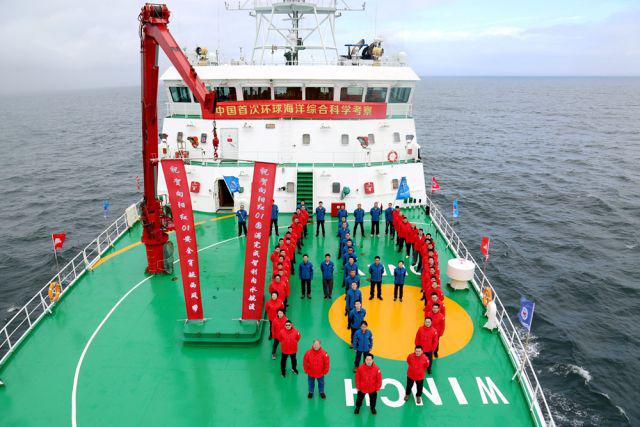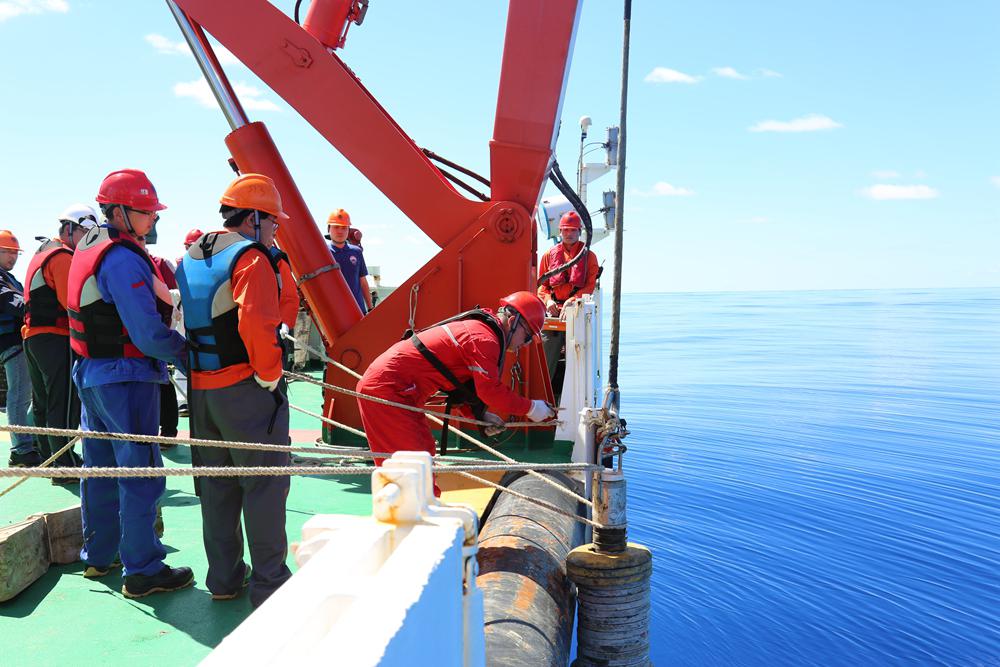China Made First Ocean Expedition in SE Pacific Ocean
On 29 March 2018 local time, Xiangyanghong 01 docked at the Papeeta Port of French Polynesia, marking the successful completion of the fifth segment of China First Around-the-world Marine Integrated Scientific Research and the 46th China Ocean Expedition. During this voyage segment, Chinese scientists made expedition in the southeast Pacific Ocean for the first time.

Xiangyanghong 01 is crossing the westerly zone. [Photo/China Ocean Mineral Resources R & D Association]
SHI Xuefa, the chief scientist of this mission, introduced that this 41-day and 5,000 sea-mile voyage segment has finished investigation in 69 stations and collected samples of deep-sea sediment, seawater and micro-plastics, and data on seabed topography, geophysics, hydrology, meteorology, and biochemistry.
“This mission marks China’s first expedition in the southeast Pacific Ocean. Samples and data acquired from this voyage could lay solid foundation for regional and world research on deep sea resources, geology, hydrology, meteorology, and ecological environment” said SHI. On February 26-27, scientists conducted 25-hour uninterrupted integrated hydrological observation in the southeast Pacific Ocean, kicking off the investigation of this voyage.
Ocean turbulence, helping to transfer ocean heat, is key for scientists to learn ocean and climate change. In this mission, Xiangyanghong 01 collected data of ocean/atmospheric turbulence and samples of sea-bed sediments and polymetallic nodules from 25 stations.

Taking samples [Photo/China Ocean Mineral Resources R & D Association]
“The sea-bed sediments can guide us in knowing the evolution history of paleocean environment and paleoclimate, and sea-bed resource information” said SHI. Dozens of polymetallic nodules were collected by box bottom samplers and will be used to analyze their distribution, causation and value.
In this mission, China used the video plankton recorder for the first time in Ocean Expedition and found that the dominant species of this region are copepod, radiolarian and diatom, especially in the water depth of 30-100 meters. Compared with traditional ways of filtering sea water, the video plankton recorder can better receive series data of plankton and assist physical-biological interaction research.

Retrieving video plankton recorder [Photo/China Ocean Mineral Resources R & D Association]
Scientists also found micro-plastic in the southeast Pacific Ocean. More than 1,800 samples of micro-plastic fiber, particles, and debris in the circulation area were collected and waiting for being analyzed.
The 46th China Ocean Expedition is guided by China Ocean Mineral Resources R & D Association. Departing from Qingdao last August, Xiangyanghong 01 has finished missions in the Indian Ocean, Atlantic Ocean, and Pacific Ocean, and is expecting for the last segment after replenishment in the Papeeta Port.


